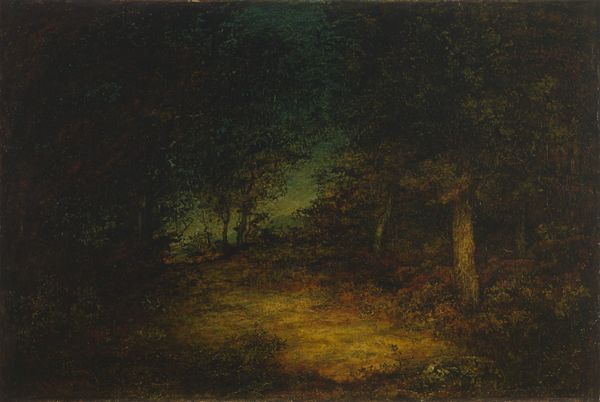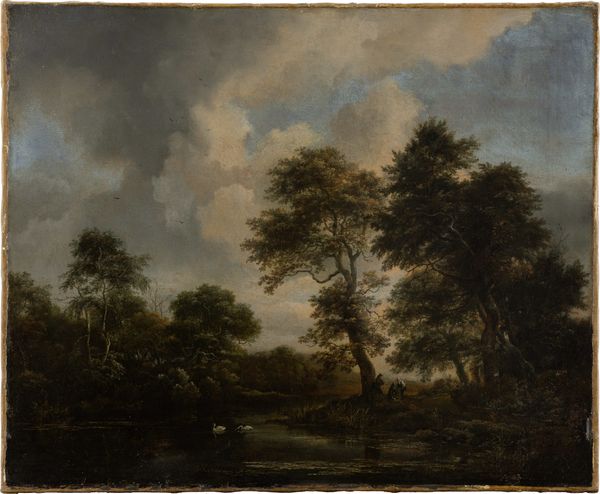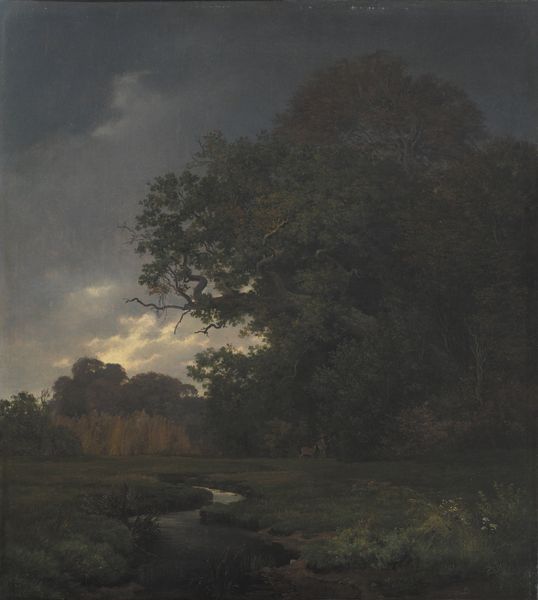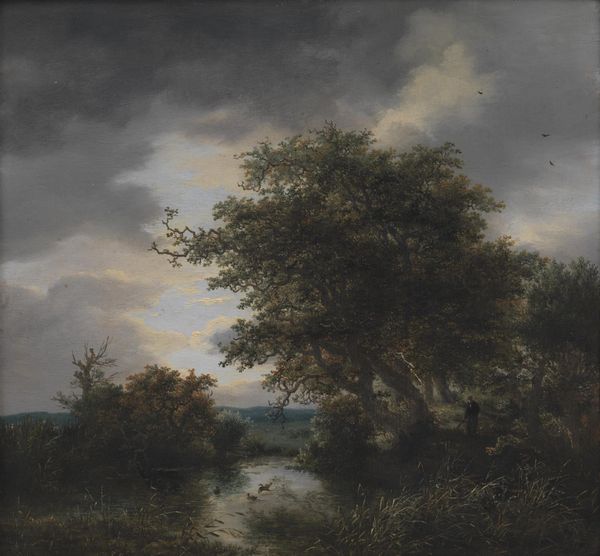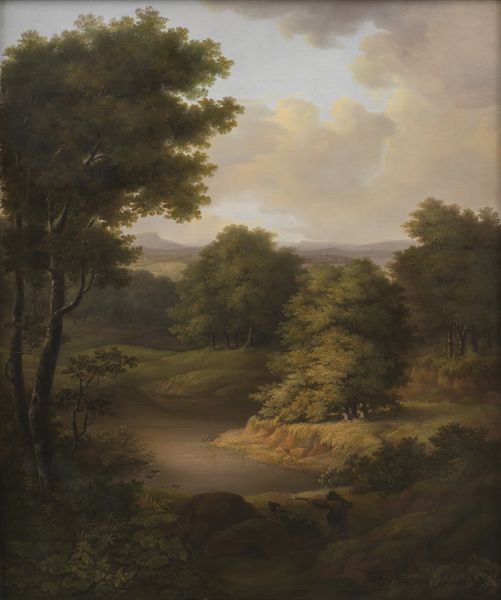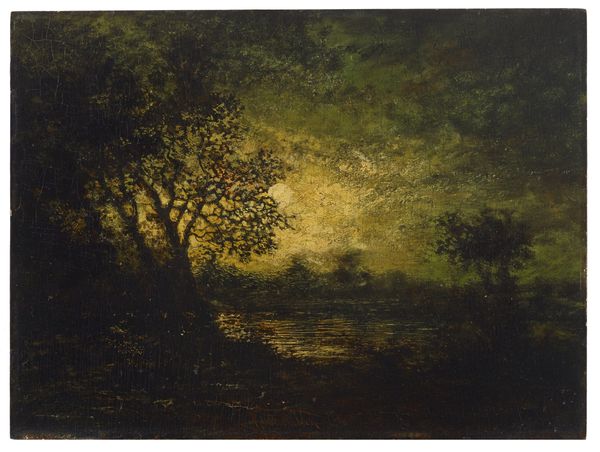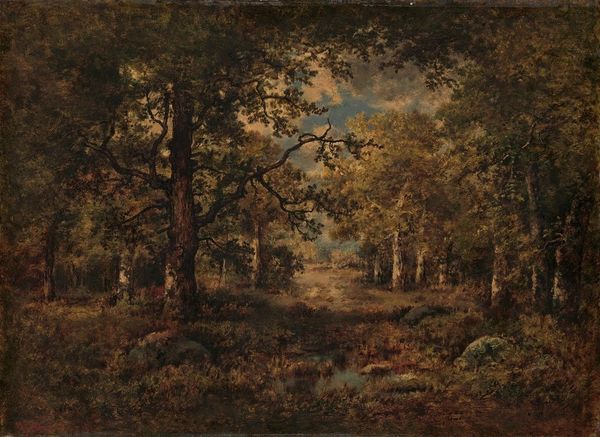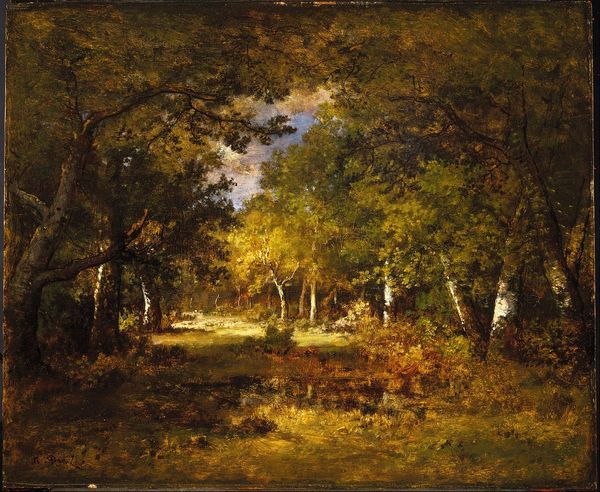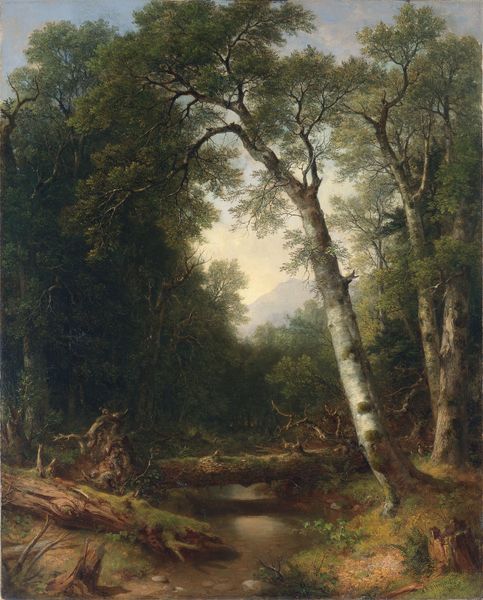
tempera, painting, oil-paint
#
tree
#
fairy-painting
#
sky
#
tempera
#
painting
#
oil-paint
#
landscape
#
impressionist landscape
#
forest
#
romanticism
#
nature
Copyright: Public domain
Editor: We're looking at "The Fairy Pool" by Narcisse-Virgilio Diaz, created around 1850. It’s an oil and tempera painting depicting a wooded landscape. I find the darkness really striking, with that small pond in the center acting almost as a mirror to the sky. How do you interpret this work? Curator: Well, I'm immediately drawn to the materiality of the paint itself. Think about how the pigment was sourced, ground, mixed with oil, perhaps by workshop assistants, and applied to the canvas. Diaz is presenting nature, but using materials extracted and transformed through human labor. What is this 'fairy pool' actually a resource for, if not literally, metaphorically? Editor: That’s a really interesting way to look at it. I was focused on the subject matter – this Romantic idea of a hidden, magical place. Curator: Precisely! Consider the consumption of this romanticized vision. Who was buying these paintings? What social class? How does this idealized, pre-industrial landscape speak to anxieties around increasing industrialization? It's not just a scene; it's a commodity, crafted with specific materials by human hands for a specific market. Editor: So, you’re saying the painting’s value isn't just aesthetic, but also tied to its production and how it fits into the economic landscape of the time? Curator: Exactly! We must consider painting's function in constructing and reinforcing certain class-based notions of nature, beauty, and even leisure. The raw materials themselves speak to global trade routes and exploitation. Even the tempera offers a contrast. Tempera, associated with early Renaissance panel paintings, might have been included as a form of pre-industrial nostalgia. Editor: That shifts my understanding entirely. I never considered the social implications of the materials used to create what seems like a straightforward landscape. Curator: Seeing art through its materiality helps us unravel layers of meaning and power often hidden beneath the surface. Hopefully it helps bring that context to light.
Comments
No comments
Be the first to comment and join the conversation on the ultimate creative platform.


